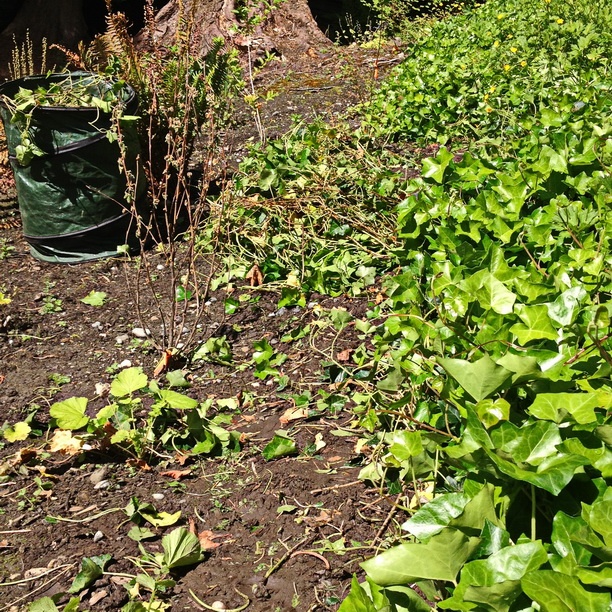As a guest blogger on this site so aptly stated, “pulling Ivy is a winter sport.” The same applies to all of the invasive evergreens — the laurels, hollies, and brooms, but urban forest restoration begins with removing Ivy. I encourage everyone to remove all of their Ivy, but if folks can only carve out a few hours this winter it would be great if they would at least address any growing up their trees by making survival rings and tending any rings they made before.
The progenitors of the Ivy gone wild in our forests came from different Hedera (Ivy) cultivars developed by horticulturalists, propagated in nurseries, and sold to consumers interested in new and improved characteristics. The American Ivy Society, “dedicated to preserving the genus Hedera through education and promotion,” identifies hundreds of different cultivars. Are all of them invasive in the Pacific Northwest?
A posting on Facebook for the group Weeds of the Northwest alerted me to a 2006 study that used DNA analysis to determine the main species or cultivars of Ivy invading the Pacific Northwest. Analyzing 119 samples from 58 locations scattered across the region the authors found that Hedera hibernica was by far the most common (83%). The only other type commonly found here was Hedera helix (13%).
It’s not easy to tell them apart. Botanists use microscopes to sort them out by the patterns of trichomes (tiny hairs or scales) on their leaves. With practice it is supposed to be possible to recognize differences in their leaves. One source states, “leaves of H. helix are usually less than 8 cm across whereas those of H. hibernica are greater than 8 cm wide and have petioles half as long as the leaf blade.” However, for the amateur backyard forest restorationist, does correct identification of different types of Ivy really matter?
The study referenced above briefly touches on the idea that compared to H. hibernica, H. helix may be slower growing and less likely to “form multiple layers and cover the ground completely.” However, the article says that characteristics that make one cultivar grow more slowly in the nursery, may disappear in wild populations, and the authors “caution against considering H. helix as less invasive.”
With her permission, I quote Barbara Wilson, one of the Facebook Group Experts, for Weeds of the Northwest. She states, “Hedera hibernica is by far the more common ivy I see, but Hedera helix and hybrids thereof can be found in the wild as well. Maybe a slower invader than H. hibernica, but an invader nonetheless. Kill them both, with prejudice!”
So, for the foreseeable future, I am not going to spend time trying to learn how to distinguish H. hibernica from H. helix. I will continue removing any Ivy I find in any of my restoration areas . . . except for some steep slopes . . . I will attempt to justify that choice in a future blog.
